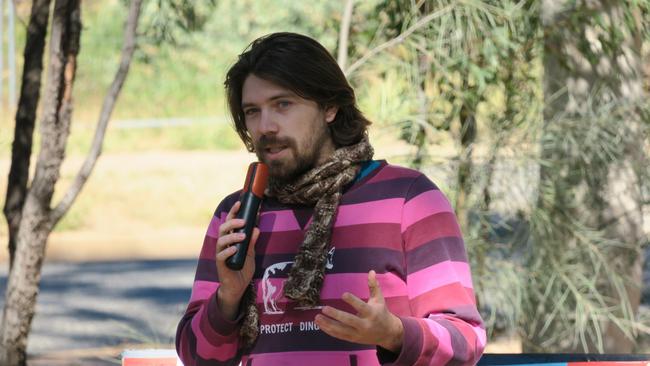Invasive buffel grass declared a weed by Northern Territory government
Cenchrus ciliaris – otherwise known as buffel grass – is now a weed in the Northern Territory. Read why the decision was made and how pastoralists and environmental groups are reacting.

News
Don't miss out on the headlines from News. Followed categories will be added to My News.
A weed declaration on an invasive Red Centre grass has environmental groups rejoicing, while pastoralists say they’re awaiting more detail on the exact classification of the weed.
Centralian Land Management Association president Liz Bird said the declaration was not a surprise – but hoped buffel would get the lowest declaration possible.
“For a lot of pastoralists buffel is a resource,” she said.
“I do understand both sides of the coin ... at times it can be feed, at times it does stop soil erosion, but we have seen the spread of it.”
That spread is what led to the Arid Lands Environmental Centre campaigning for buffel to be declared a weed, with chief executive Adrian Tomlinson calling the declaration “historic”.
ALEC policy officer Alex Vaughan said buffel grass had impacted “at least 31 threatened species nationally” and the weed declaration was the NT government “catching up to on-ground land management experience that buffel grass is a weed and needs to be urgently managed”.
“This is a vital opportunity to turbocharge research solutions at the landscape-scale,” he said.

“The spread of buffel grass has continued at an exponential rate across the arid lands, and decades have been lost, but it’s not too late.
“Let’s work together to stop the spread of buffel grass across the arid lands.”
Invasive Species Council conservation and biosecurity analyst Lyall Grieve said it was good to see the NT government following in the footsteps of South Australia in declaring buffel grass a weed.
“This is a huge win that follows years of relentless campaigning by local Indigenous groups, environment groups and tourism operators who are alarmed at the spread of this highly flammable weed,” he said.
Mr Grieve however said the move needed to be backed up with serious funding commitments in battling buffel.
“If we are going to save the remaining central Australian mulga, red gum woodlands, hummock grasslands and the animals who rely on them from this invasive menace, then it will require long term funding of a targeted removal program,” he said.
When asked what the next step was after the weed declaration, Chief Minister Eva Lawler said it was now everybody’s job to get on board and join the fight.
“It’s not just a government issue, it’s also council and it’s also landholders,” she said.
“Now the hard work really starts around targeting and similar to with gamba grass, you really have to be constant and consistent around your work to to eliminate and eradicate in specific areas.
“Everybody has to do their part, because otherwise you’re really chasing your tail around it.
“We’ve seen that in the top end with gamba, we need to do that with buffalo down here.
Invasive buffel grass declared a weed by Northern Territory government
An invasive grass – which has covered swathes of the Red Centre – has been declared a weed by the Territory government.
Environment, Climate Change and Water Security Minister Kate Worden declared buffel grass a weed on Friday, July 5 – with the government now set to move “towards reducing its impact in Central Australia” through a formalised weed management plan.
“I am confident this declaration is in the best interests of the broader community – now and into the future,” she said.
A Buffel Grass Weed Advisory Committee recommended the government declare buffel a weed – months after the committee was first established.

A technical working group and the Buffel Grass Management Strategy 2024-2030 also informed the decision, according to a statement from Ms Worden.
“The committee is a great example of how when we bring together a diverse range of voices and views, we can find manageable ways forward in collaboration with each other and the broader community,” Ms Worden said. “The Buffel Grass Management Strategy 2024-2030 provides a pathway forward for the Territory, and most importantly Central Australia, in reducing the impact of buffel grass, particularly in areas of cultural and community value.”
The strategy sets out buffel management actions that can be taken in order to prevent the spread of the invasive plant, such as: detection programs; early intervention programs; ways to prevent buffel from establishing on land; and more.
The 2024 budget included $750,000 to combat the grass, with $575,000 set aside for “program management, planning and technical services to implement buffel grass management in Central Australia” the statement from Ms Worden said.
More Coverage
Originally published as Invasive buffel grass declared a weed by Northern Territory government




